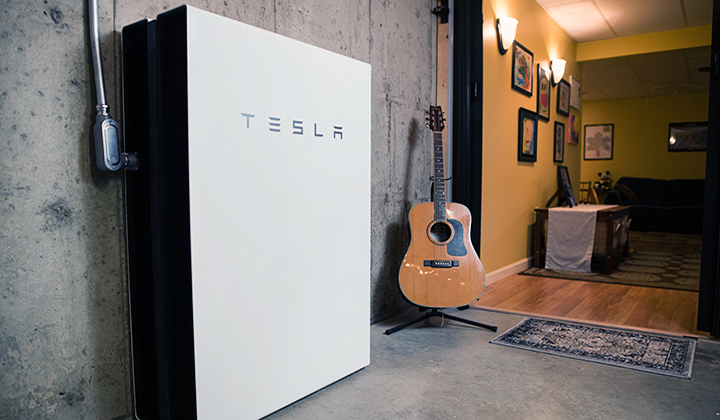
The Australian government’s new AU$2.3 billion (US$1.49 billion) Cheaper Home Batteries Program could help make the country one of the most investable areas for battery energy storage systems (BESS).
That’s according to Tim Buckley, director of think tank Climate Energy Finance (CEF), who spoke exclusively with ESN Premium for an interview on the scheme’s recent launch and the Australia’s energy storage market dynamics.
“It [the government’s programme] is likely to make Australia a red-hot market for new battery energy storage systems, and so it’ll build out the local supply chains,” Buckley explains.
Indeed, when introduced from 1 July 2025, the programme will help cut the upfront cost of home BESS by 30%. Although it focuses on home installations, this could support the the broader energy storage market by helping develop domestic manufacturing capabilities and supply chains, which could benefit utility-scale projects.
Try Premium for just $1
- Full premium access for the first month at only $1
- Converts to an annual rate after 30 days unless cancelled
- Cancel anytime during the trial period
Premium Benefits
- Expert industry analysis and interviews
- Digital access to PV Tech Power journal
- Exclusive event discounts
Or get the full Premium subscription right away
Or continue reading this article for free
“It’s going to bring to Australia the best technology, the best innovation, and hopefully a lot of domestic labour so that we can go and deploy,” Buckley adds.
The Cheaper Home Batteries Program was first announced in early April in the build-up to the 2025 federal election, which took place on 3 May and saw Anthony Albanese’s Australian Labour Party win a second term in government.
Buckley emphasises the Cheaper Home Batteries scheme’s importance and its potential impact on driving down the cost of home BESS when combined with state government schemes.
“I think this is a really important policy expansion by the Albanese government. I like that this is a 30% subsidy to the capital cost. It’s additional or stackable with any state scheme. So, the New South Wales battery subsidy programme, which grants up to AU$2,400, can be stacked with the federal one,” Buckley says.
“In Western Australia, they are proposing an AU$5,000 per household subsidy for a home battery. It’s stackable and will make it virtually free to get a battery.”
Details on Western Australia’s Household Battery Rebate Scheme were released earlier this week. Synergy customers will be eligible to receive up to AU$5,000 and Horizon Power customers up to AU$7,500 towards a home BESS. This scheme will have a budget of AU$337 million.
According to Buckley, despite sounding like “massive overkill” in terms of subsidy, these schemes will stimulate activity and support the uptake of home batteries, creating his aforementioned ‘red-hot’ market conditions.
Bringing real benefits to customers
Another key component of this home BESS scheme that Buckley raises is its ability to provide tangible benefits to customers from the get-go. This provides customers with cost advantages and money off their electricity bills, while developers focus on utility-scale renewable energy and energy storage projects and the necessary grid transmission rollout to decrease the grid’s carbon intensity.
“The scheme allows us to deploy a huge amount of solar across Australia using the existing grid. My biggest fear is that we spend AU$40 billion on massive new grid transmission upgrades, and we, the consumer, all have to bear that,” Buckley begins.
“Whereas these batteries, these rooftop solar systems, all these electric vehicles (EVs), will use the existing grid, which means we don’t have to wait five or 10 years for grid transmission system build-outs.”
This could be pivotal in maintaining public support for the energy transition. Peter Dutton, the former leader of the opposition, said his party would exploit oil, gas, and coal to drive down energy bills, attempting to appeal to a wider audience.
Providing cost benefits and evidence of decreasing energy bills for customers, mainly through the uptake of solar PV systems and a home BESS, could help appeal to a broader range of people and prove the cost benefits of quick-to-deploy renewables and energy storage.
Buckley agrees with this perspective, saying that one of the core components of the recent federal election was the cost-of-living crisis.
‘Hybrid projects are eminently bankable’
In Australia’s utility-scale energy storage sector, there has been a growing number of co-location and hybridisation of energy assets, including both renewable energy generation and an energy storage asset, often a BESS.
Buckley claims that bankability and negative power prices are the biggest drivers of co-location. He states that when a solar PV power plant generates energy, all the other utility-scale assets do the same, leading to negative power prices. Including a co-located BESS can help solve this by storing and shifting energy exports to the evening peak.
“If you throw a big energy storage system alongside a solar PV plant, it becomes eminently bankable, because you’re then using that behind-the-meter solar generation to charge the BESS, and then you are shifting it into the evening peak,” Buckley says.
“You’re effectively underwriting a power purchase agreement delivering electricity across the 24-hour period. It makes solar at the utility-scale eminently bankable, which has been unbankable for the last five years, because rooftop solar is so effective in Australia.”
More information on the Australian government’s Cheaper Home Batteries Program can be found on the official website.
